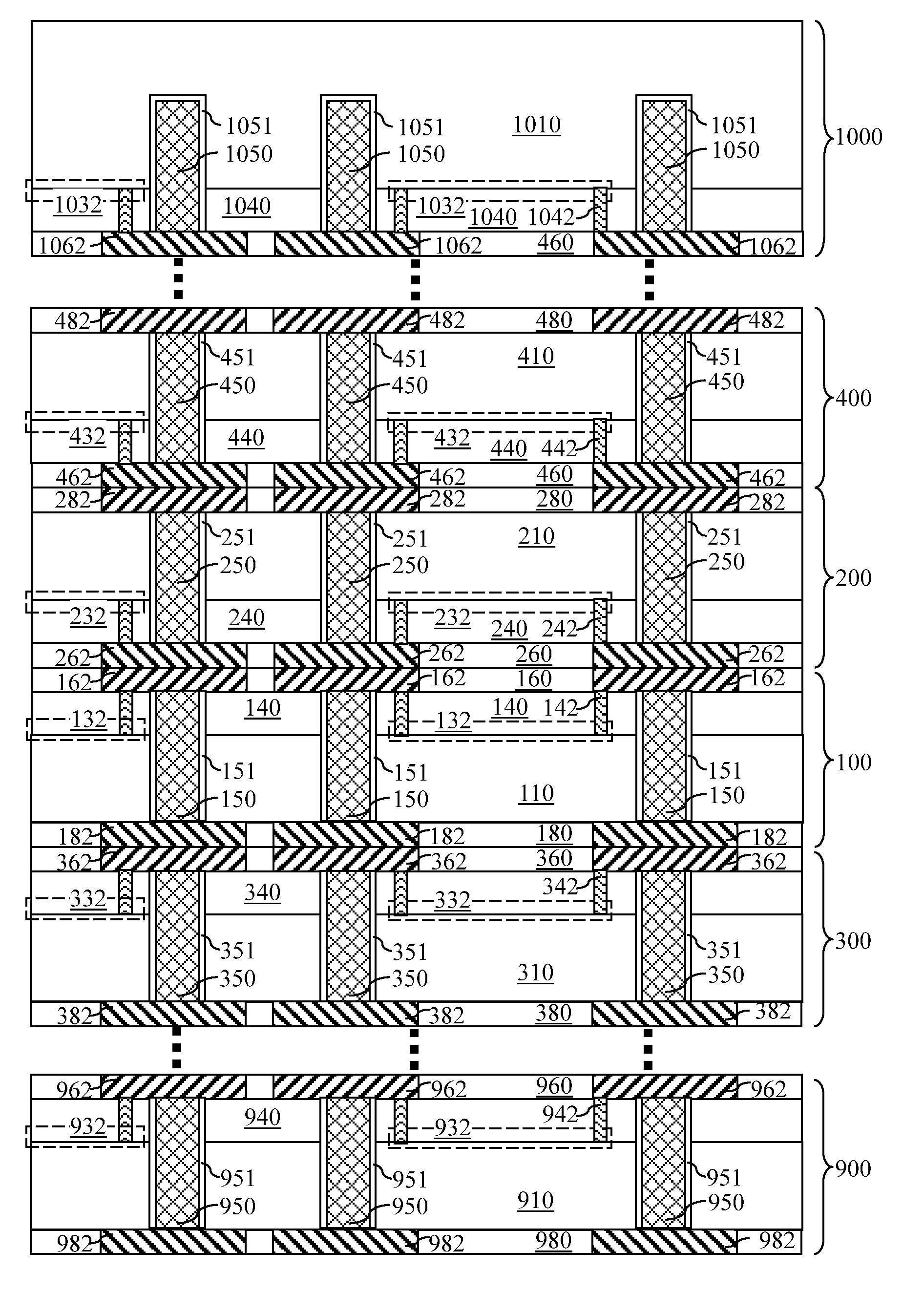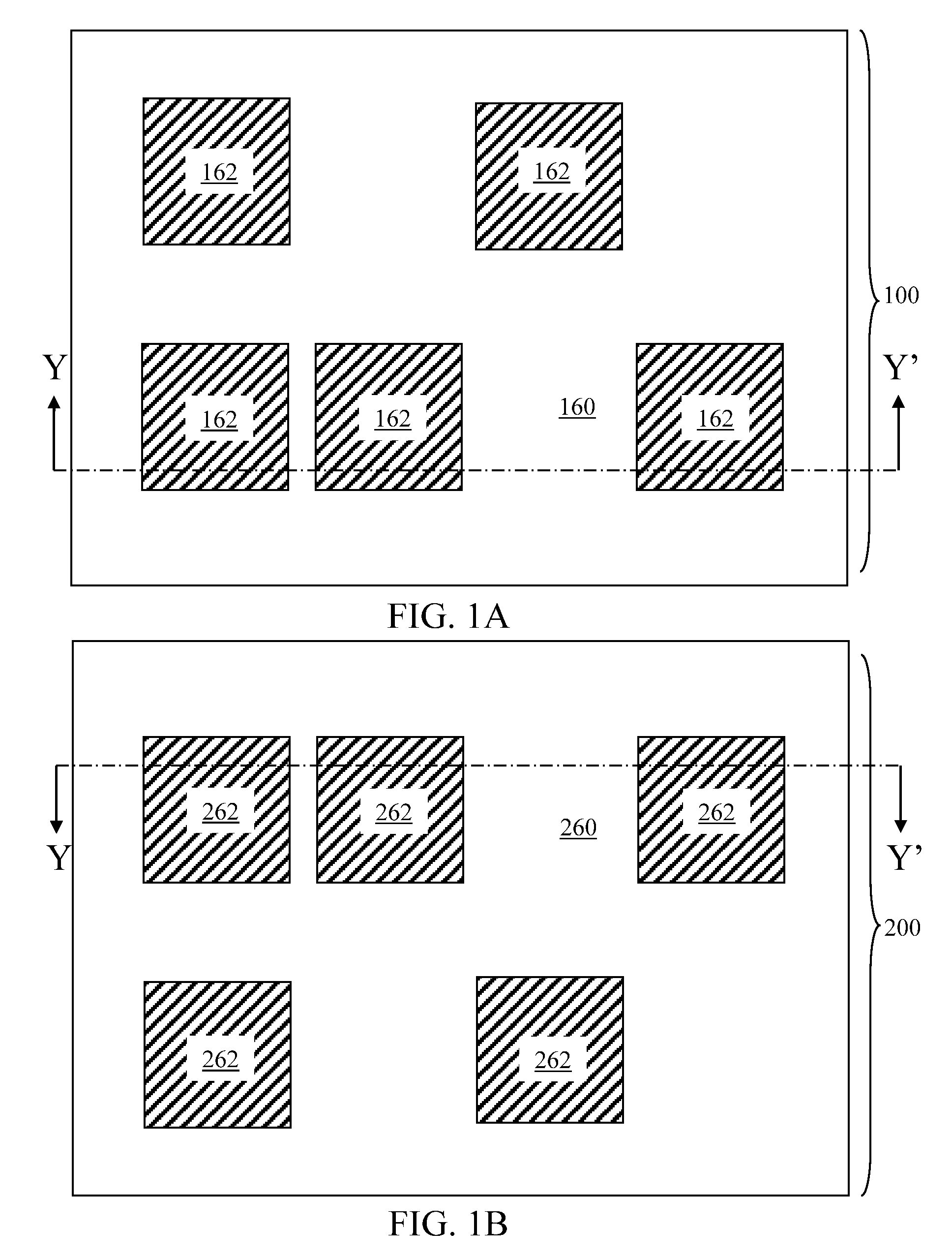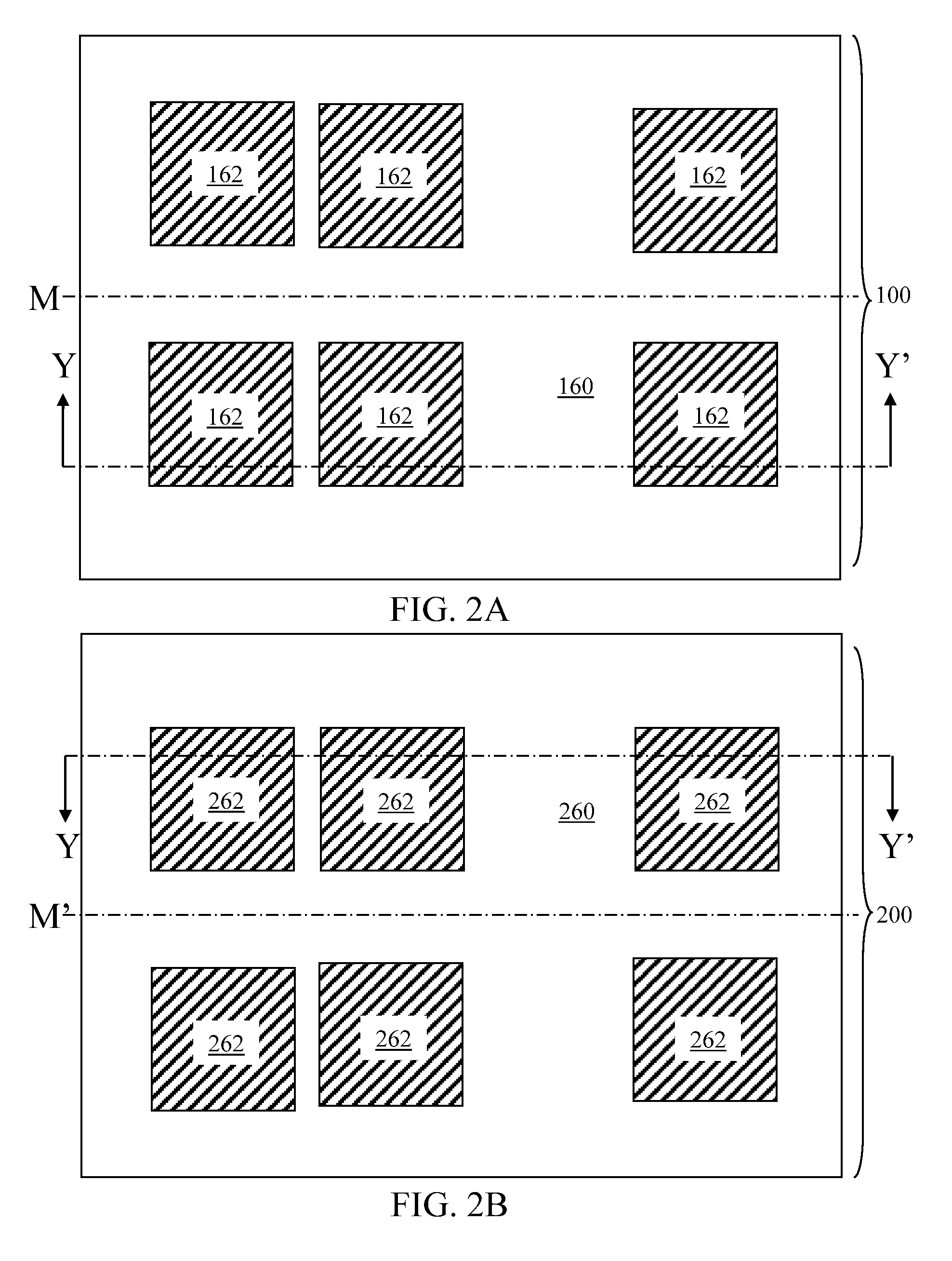Bow-balanced 3D chip stacking
a 3d chip and stacking technology, applied in the direction of semiconductor devices, semiconductor/solid-state device details, electrical devices, etc., can solve the problems of difficult bonding even three wafers, non-uniform thickness of each substrate, and high cost and time consumption of processes, so as to achieve the effect of maximum cancellation of wafer bows
- Summary
- Abstract
- Description
- Claims
- Application Information
AI Technical Summary
Benefits of technology
Problems solved by technology
Method used
Image
Examples
Embodiment Construction
[0016]As stated above, the present invention relates to methods of stacking semiconductor substrates while maximally compensating for bowing of the semiconductor substrates and a bonded assembly of a plurality of substrates thereby formed, which are now described in detail with accompanying figures. Throughout the drawings, the same reference numerals or letters are used to designate like or equivalent elements. The drawings are not necessarily drawn to scale.
[0017]As used herein, a “semiconductor chip” is a structure including at least one of an integrated circuit, a passive component such as a capacitor, a resistor, an inductor, or a diode, or a micro-mechanical-electrical structure (MEMS), or a combination thereof that may be formed on a substrate including a semiconductor material.
[0018]As used herein, a “semiconductor substrate” refers to any substrate including a semiconductor material that is suitable for formation of semiconductor devices known in the art. A semiconductor su...
PUM
 Login to View More
Login to View More Abstract
Description
Claims
Application Information
 Login to View More
Login to View More - R&D
- Intellectual Property
- Life Sciences
- Materials
- Tech Scout
- Unparalleled Data Quality
- Higher Quality Content
- 60% Fewer Hallucinations
Browse by: Latest US Patents, China's latest patents, Technical Efficacy Thesaurus, Application Domain, Technology Topic, Popular Technical Reports.
© 2025 PatSnap. All rights reserved.Legal|Privacy policy|Modern Slavery Act Transparency Statement|Sitemap|About US| Contact US: help@patsnap.com



